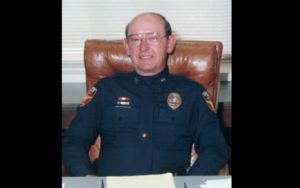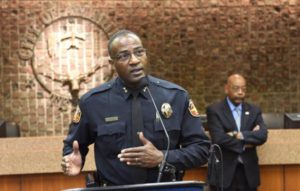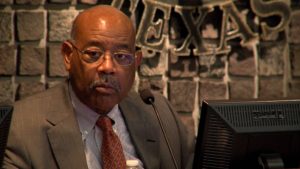I spent a lot of years in journalism working with police officers. I reported on their activities and duties and I commented on them as well. I am proud to say I got it mostly right and that my relationship with police was mostly cordial.
However, I received two extraordinary opportunities while working in Amarillo that gave me a glimpse — and that’s all it was, a glimpse — of police work that gave me a better understanding of what our men and women do when they suit up to “protect and serve” the community.
Some years ago, I wrote a column for the Amarillo Globe-News that was mildly critical of the local police department. I don’t recall the issue at this moment. I do recall a phone call I received from a source — who also was a friend — at the Amarillo Police Department.
Jeff Lester was a captain on the force. He called me to challenge me to attend the Citizens Police Academy the APD puts on annually to acquaint civilians with some of the nuts and bolts of police work. I took up Lester’s invitation. I applied for the academy. The APD accepted me as a “cadet.” I attended meetings for a night each week; the course lasted 11 weeks. I learned about how the cops go about their duties.
I learned about drug interdiction, surveillance, hostage negotiation, crime scene forensics, the K-9 force, I got to participate in a ride-along with a beat officer, and got to shoot weapons at the firing range. We shot .38-caliber revolvers, 9-mm Glock semi-auto pistols, AR-15 rifles. To be honest, I had a blast shooting the weapons. I was able to shoot pretty good groupings with the revolver and with the AR-15. Indeed, the AR-15 felt much like the M-16 I was issued in the Army back in the day, so shooting that weapon triggered a form of “flashback” … no pun intended there.
All told, the Citizens Police Academy was an eye-opening experience I welcomed at the time. It filled me with a keen appreciation for the work that our officers do. And I damn sure learned first hand that there is no such thing as a “routine traffic stop.”
The second experience occurred years later. The APD was staging a series of simulated police encounters. The police invited several media representatives to take part. I was one of them.
We were armed with pistols loaded with paint-ball pellets. We would fire them in situations as they developed. We were given scenarios and given the options we could employ. Do we shoot? Do we hold our fire?
There was one situation involving a hostage-taking. The “bad guy” would take off and run in the opposite direction. I entered the room. My heart was racing. Adrenaline was racing through my body. When the moment arrived for me to decide what to do — to shoot or not shoot — I chose the former and shot the “bad guy” in the back as he was running away!
The police officers who were managing the scene told me — with smiles on their faces — that I, um, made the wrong decision.
These situations were intended to mirror real-life situations. I knew they weren’t. They are tightly managed. However, I learned in real time about the mental toughness and discipline required for good police officers to do their job while protecting you and me.
I will never take these men and women for granted.






